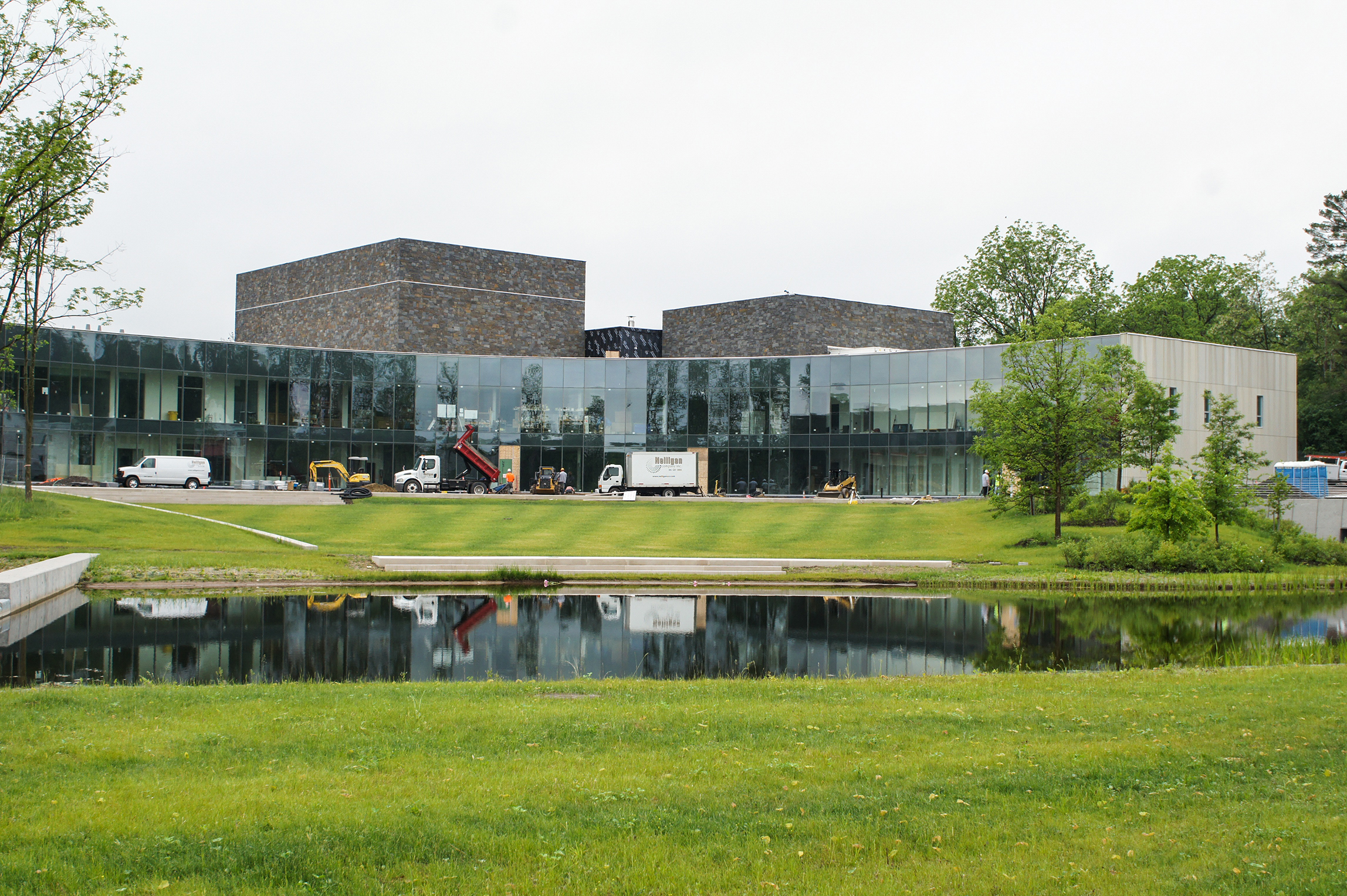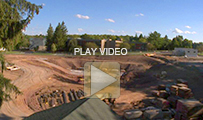
Although the school year has ended, the campus is still bustling with activity. In particular, it’s hard to miss the some 120 people working on the new Kevin and Karen Kennedy Center for Theatre and the Studio Arts, which will be opening its doors this fall. The building is in its final stages of construction, representing over 13 years of planning and millions of dollars in donations and serving as a beacon for the arts on the Hill. The Kennedy Center, positioned directly across College Hill Road from the Wellin Art Museum, will offer students and faculty incredible spaces in which to create, teach and perform.
Professor Sam Pellman, who has played an integral role in the project since 2001, believes that the Kennedy Center will increase the number of students majoring in the arts and will attract prospective students to Hamilton who may otherwise not have considered the college. The Kennedy Center was not designed to serve only students pursuing their artistic passions, but rather for the entire campus community as the center’s concave design reflects. Describing the building’s curved wings, Pellman called them “arms reaching out to embrace all of campus.”
The theatre department’s new space on the building’s second floor includes an acting classroom, a multipurpose seminar room and a design studio. The building will house two theatres, the smaller of which, the Edwin Barrett Theatre, is a traditional black box space. The 3,600-square-foot theater has movable catwalks, mutable seating and trap flooring. The building was designed to accommodate simultaneous theatrical productions, and as such, both theatres share a box office and coat room, the Patsy Couper backstage area, costume and prop storage, a full scene shop and three basement-level dressing rooms.
The center is not just for performing arts however. There will also be a woodworking studio, a sculpture classroom, a casting workshop a hot shop to accommodate the kilns and studio spaces for painting, drawing and printmaking. Twenty-four senior studio spaces on the second floor will offer essential natural light via spacious skylights and floor-to-ceiling windows.
The building will also house lithography, etching, dark room photography, digital printmaking and a recording space. There will be two computer classrooms and a video production room complete with a green screen, overhead lighting, a camera and a playback monitor, as well as a studio space for radio drama. Pellman, who leads the Studio for Trans-media Art and Related Studies (STARS), was particularly excited about the tech support office, which will allow students to sign out digital cameras, recorders, headphones and other devices for their projects.
Apart from its instructional purposes, the Kennedy Center also has an outdoor amphitheater, a pond, a breezeway and a large exhibition space inside the main entrance. In the center’s entrance area, there is a memorial wall that displays the names of the women who were enrolled in Kirkland College.
The additional space, Pellman noted, is not reflective of any plan to expand the student-teacher ratio but rather the opportunity for expanded offerings. The Wellin Auditorium will still be used for musical performances as well as dance productions; Minor Theater, the site of previous Theatre Department productions, is being renovated as student housing for fall 2015.

